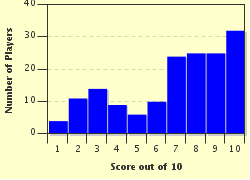Quiz Answer Key and Fun Facts
1. This majestic, yet somehow comical, bird is the largest living species of penguin. It is endemic to Antarctica and is the only penguin to breed there in the height of winter. Can you name it?
2. This species of penguin is named after an area of Antarctica, which was in turn named after the wife of the French explorer, Jules Dumont d'Urville. What name did it therefore inherit?
3. This agile little bird is a species of crested penguin and can be easily identified by its impressive head feathers. It has the Latin name Eudyptes chrysocome, but is more commonly known as the southern __________.
4. Eudyptula minor has many different names. It is generally known as the little penguin (for obvious reasons), but in New Zealand it is often referred to as the blue penguin, little blue penguin, or korora (in Maori). By what name is it commonly referred to in Australia?
5. If all the different species of penguin in the world took part in an underwater swimming race, then this particular bird would win the gold medal. However, if you blinked and missed it have a look at the picture as it can also be identified by the distinctive white patch on its head. What is it called?
6. The chicks of most penguin species have fairly nondescript grey or brown, downy plumage. However, when these chicks grow their adult plumage they will have the distinctive head markings that give their species which common name?
7. The penguins pictured here were named after a famous Portuguese explorer who became one of the first Western people to see them in the early 16th century. Can you identify their species from the options below?
8. This penguin is imaginatively named after a particularly distinctive physical feature. Take a look at the attached picture and see if you can work out what it is called?
9. The name of these waddling water-birds might give unsuspecting ornithologists the impression that they are particularly skilled in the use of wire traps. However, they actually take their name from the island group, located south of New Zealand, to which they are endemic. Which species is pictured?
10. Most penguins live on a diet of fish, krill and squid, and, despite its name, this species is no exception. Also, excluding any birds residing in zoos, it is unlikely to ever be seen in Italy. Can you pick out the name of this species?
Source: Author
Fifiona81
This quiz was reviewed by FunTrivia editor
Tizzabelle before going online.
Any errors found in FunTrivia content are routinely corrected through our feedback system.

